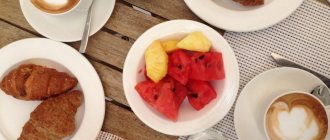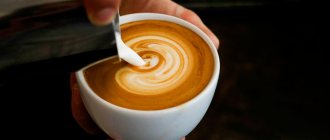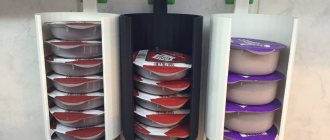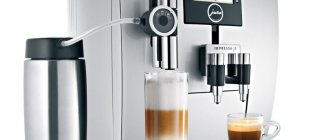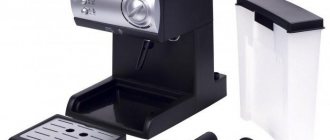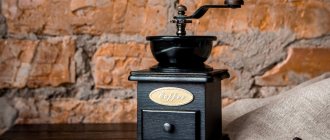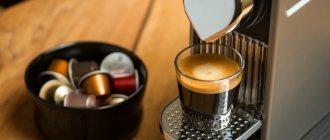Drawing up a technical and technological map is a requirement of regulatory authorities for the catering industry. This is a regulatory document necessary for the production of original culinary products. The rule does not apply to goods supplied by other institutions.
A technical and technological map (GOST 31987-2012) is issued for all dishes of catering companies. A document is also required for the release of culinary products created for human consumption. It is also used in retail trade for own culinary products.
To compile technical and technological maps, the following information is indicated:
- number of products used;
- description of the technology for releasing the dish;
- delivery method;
- raw material safety requirements;
- results of product safety studies;
- presentation of the technological process.
But to create a map, you need to familiarize yourself with the sections in more detail. To do this, you need to study the document according to the finished sample.
Technological map of cappuccino coffee
Like any dish or drink, cappuccino has its own technological map. The card is a standardized document that serves as a kind of instruction for those who prepare cappuccino.
Some people get confused by calling cappuccino a cocktail and not a coffee drink. But this is not the case, because the concentration of espresso here is quite high for a cocktail. In order to prepare cappuccino, you need to brew espresso, heat the milk, and froth some of it using a cappuccino maker.
Proportions (ratio) of coffee and milk in cappuccino. According to the technology, this drink consists of one third espresso, one third milk, 1/3 part milk foam. Sugar or topping can be added as desired.
The milk should be whole, but not dry. The fat content of milk is 3.2 percent. The ideal temperature for milk is 3 degrees above zero.
In order to brew standard espresso, you need: 1 teaspoon of ground coffee and 40 ml of water. To get a spoonful of coffee you need to take 7 grams of beans. And you need to take at least 150 ml of milk, a third of which will turn into foam.
How many calories are in cappuccino coffee: with sugar, without sugar. The calorie content of such a drink is not very high. If a person prefers to drink cappuccino without sugar, then 200 ml of drink accounts for at least 32-50 kcal. With sugar, the calorie content is slightly higher, namely 47-75 kcal. It is impossible to say exactly how many calories are in a particular cup. Because calorie content depends not only on the amount of sugar, but also on the fat content of the milk used, as well as the presence of syrup, chocolate and other possible additives in it.
How to serve and drink correctly
For cappuccino, it is necessary to preheat the serving container - ceramic cups are usually chosen in this case. In coffee shops you can often see a rounded cup with a handle that is placed on a saucer. In Italy, where this type of coffee drink originated, it is consumed in the morning along with pastries. A tall coffee glass is also suitable for cold versions of this drink, especially if you need to make a multi-layered dessert.
What cups are suitable for cappuccino coffee?
If we talk about specific cup sizes, baristas use dishes with a capacity of about 170 ml. Ideally, to serve cappuccino correctly, you need to use 120 ml cups - this is double the volume of standard espresso. If you plan to add spices or other ingredients, it is better to take a larger cup - 140 ml will do. If you are planning a double portion, you can use 300 ml.
How to draw on coffee
There are several cappuccino drawing techniques that anyone can master. The easiest way is to apply a design using a stencil. These tools are sold at most craft stores. To make the drawing work, you need to create the thickest possible foam, apply a stencil and make a picture on it.
Which coffee is best for cappuccino?
To make cappuccino truly tasty and aromatic, you need to take into account some factors that affect its taste. Espresso plays a huge role in the preparation of this coffee drink. The quality of cappuccino depends on the quality of its preparation. But initially the taste of the drink is affected by the type of coffee. The ideal variety for preparing espresso for cappuccino is Arabica with a small amount of medium-roast Robusta.
Today, coffee lovers are presented with a large number of types of coffee, which differ in the degree of their roasting, country of production and other criteria. Everyone can choose exactly the variety that suits their taste. Because it’s not worth talking about any specific type, because it’s quite subjective.
Some people may like a more bitter drink and can use deep roasted beans for this, while others prefer a softer cappuccino. If coffee is prepared at home, then everyone can prepare the drink based on their preferences, making adjustments to the standard recipe.
How to make cappuccino coffee using a coffee machine
The type of cappuccino you get in a coffee machine is not affected by its power, volume and number of stations (the station is the part of the coffee machine where the holder (portafilter) is installed, plus the holder itself with the filter).
The type of machine and the type of cappuccino maker, as well as the possibility of warming up the mugs, have a direct impact on the taste and quality. For those who love cappuccino, but do not know anything about making it, you can give preference to a fully automatic coffee machine. But the most delicious cappuccino is obtained in a semi-automatic machine, where all operations must be controlled.
The quality of the drink's foam depends on the type of cappuccino maker. As with a coffee machine, they come in automatic and semi-automatic varieties. Professionals recommend using a semi-automatic option, where the foam is whipped manually, but this is done using hot steam from a cappuccino machine.
It is important that the container is warmed up before pouring espresso into the cup. To do this, the upper part of the coffee machine is heated, since cups for the drink need to be placed in them.
Also interesting: mochaccino recipe
Espresso
Espresso is coffee prepared by passing hot (about 90 °C) water through a filter with ground coffee.
The drink is very popular all over the world and, above all, in the south of Europe.
In Russia, the word espresso has been used since the early 1990s and is gradually replacing the name “small double”, which was used previously.
Making espresso
From 7 to 9 grams of freshly ground coffee is poured into the holder, carefully leveled and then pressed with a “Tamper” tamper so that the ground coffee is formed into an even tablet. Then, water heated to a temperature of 88–92 °C is passed through the resulting tablet under a pressure of 9 bar. It is important to remember that the time from fixing the portafilter in the dispersion screen to pressing the corresponding button on the coffee machine does not exceed two seconds, otherwise the coffee begins to “burn”, nullifying all the work. The fineness of espresso grinding is set in such a way that 30 ml of espresso is extracted in 25-30 seconds, after 1.5-2.5 seconds “Pre-infusion” pre-infusion. The ratio of correct grinding, correct tempering (compressing ground coffee in a holder by creating a force of 15-20 kilograms), correct water temperature and its stability, as well as the correct amount of ground coffee (about 8 or 16 grams, single, double holder, respectively) - the key to proper preparation. Even a slight change in any of these aspects will ruin the final product. Visually, the correct preparation is determined by the color of the foam and by the stream of coffee bending in the first seconds (the so-called “mouse tail”). In preparing espresso coffee on classic coffee machines, the person who prepares the coffee, the barista, plays an important role.
Classic espresso usually has a volume of 25-35 ml and is served in a 60 or 70 ml demitasse cup. Double espresso, prepared from 14-18 grams of coffee, has a volume of 60 ml.
Another option for preparing classic espresso is possible by using a coffee maker or coffee machine that supports ESE technology. Pods are inserted into such a coffee machine; or coffee capsules; ready-made packaging for one serving of drink.
Varieties of espresso
In addition to the classic espresso, the average portion (about 7 g of coffee per 25 ml of water), the usual 40-50 grams (about 10 g of coffee per 35 ml of water), there are several varieties:
- espresso- doppio (dopyo, double) - double shot of espresso;
- espresso- lungo (long espresso) - the same amount of coffee, but the amount of water increases to 70 ml;
- espressoristretto - the same amount of coffee, but the amount of water is reduced to 18 ml ;
- espresso- macchiato (macchiato) - with the addition of a small amount of foamed milk;
- espresso con panna - espresso with a top of whipped cream;
- espresso- romano with lemon juice or zest;
- espresso- corretto is a standard espresso with the addition of spirits, usually a small amount of liqueur.
Espresso coffee makers
Milanese engineer Bezzera, Luigi invented the first espresso machine on November 18th. This espresso machine was essentially a large boiler half filled with boiling water and pressurized steam at the top. The main innovation of Luigi Bezzera was a group with a holder, which was located on the boiler, and into which, by opening the valve with a lever, the barista poured hot water. Next, the person was required to lower the lever to close the water supply valve, open the steam supply valve to the coffee tablet in the holder, which passed water through the coffee and through the membranes of the strainer in the holder, and the drink fell into the cup through the spouts.
In 1903, Italian industrialist Desiderio Pavoni acquired a license to manufacture Bezzera coffee makers. In 1947, Milanese bartender-inventor Achille Gaggia began producing semi-automatic coffee makers, where the required pressure is achieved by powerful water pressure created by the barista using a lever (special lever); Such coffee machines are still called lever coffee machines.
In 1961, Faema replaced the lever with an electric pump capable of producing stable pressure (brand Faema E61). Currently, professional super-automatic coffee machines with a full preparation cycle are already widely widespread (from grinding coffee beans of the required fineness and required quantity, to compacting them into tablets and extraction at specified parameters, including temperature), in which all stages of coffee preparation are clearly monitored by electronic devices. components of the coffee machine itself (for example, brands Franke Spectra, Schaerer, Jura, Saeco, Gaggia), and specially trained engineers are engaged in setting up and servicing such machines.
The classic method is to prepare espresso using automatic carob (LaSpaziale) and semi-automatic machines.
World championships are held for this method of preparing coffee (under the auspices of SCAE and SCAA - Specialty Coffee Association of Europe and America, respectively) World Barista Championship.
In the late 80s, capsule coffee also gained popularity. The technology of a capsule coffee machine partly repeats the principle of espresso machines: water under pressure passes through the ground coffee. However, the difference is that the coffee is already packaged in capsules, which significantly speeds up the preparation of coffee
Recipe for cappuccino coffee in a coffee machine
Before cooking, make sure that the cup is heated to medium temperature. Next, you need to pour bean coffee for grinding or ready-ground coffee into the holder of the device. Then you should carefully press the coffee. You can then place the holder on the post and the machine will prepare the espresso itself. While the coffee is pouring into the cup, you need to prepare the milk. It is better if it is at room temperature, and you can choose the fat content based on your preferences.
You need to pour three quarters of the milk into the milk jug and place it next to the cappuccino maker. It should be immersed in milk no more than 3 cm. Hold the container at an angle of 45 degrees. When a dense foam has formed, the milk can be poured into the espresso.
How is raf different from cappuccino and latte?
Lattes and cappuccinos are classic drinks that can be found in almost any establishment that serves coffee. Raf is less famous than his brothers. If you compare the composition of drinks, raf, unlike cappuccino and latte, is prepared using cream rather than milk. Rough is usually served in large cups, just like latte. The technology for preparing drinks varies. For cappuccino and latte, the milk is frothed separately, then the milk is poured into the espresso. Raf involves simultaneously whipping espresso, cream and vanilla sugar.
How to brew Turkish cappuccino coffee at home
Making cappuccino in a Turk is quite simple.
For this you need a Turk, as well as a French press. First you need to brew espresso using standard proportions. The cup must be heated by first pouring boiling water over it and leaving it to cool. After this, you can pour the coffee into a cup. At this stage sugar is added. Next, you need to beat the milk in a French press, preheating it almost to a boil. After these movements, carefully pour the frothed milk into a cup. You can decorate the top with cinnamon or grated chocolate.
Where there is less coffee - in latte or cappuccino
Inexperienced coffee lovers, when trying a cappuccino or latte for the first time, may not feel much difference. But in fact, these are two different drinks, and they have significant differences.
The main thing is the amount of milk. Latte is a layered drink in which there is one third more frothed milk, which is why you can’t hear the bitterness of espresso at all. Therefore, some experts argue that latte is not a coffee drink at all, because espresso takes up only a quarter of it.
Similar articles:
- Instant coffee: benefits and harms
- Coffee facts: producing and exporting countries
- Types of coffee at Starbucks: recipes, calorie content, how to make
- Which types of coffee are considered the best: coffee brands
- Secrets of Vietnamese coffee: cost, preparation



